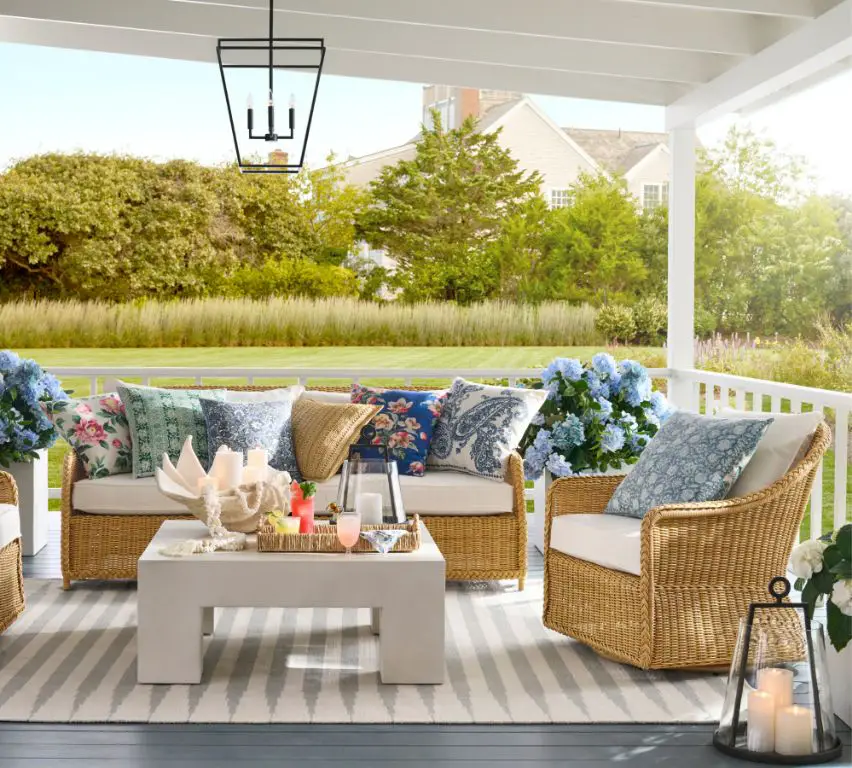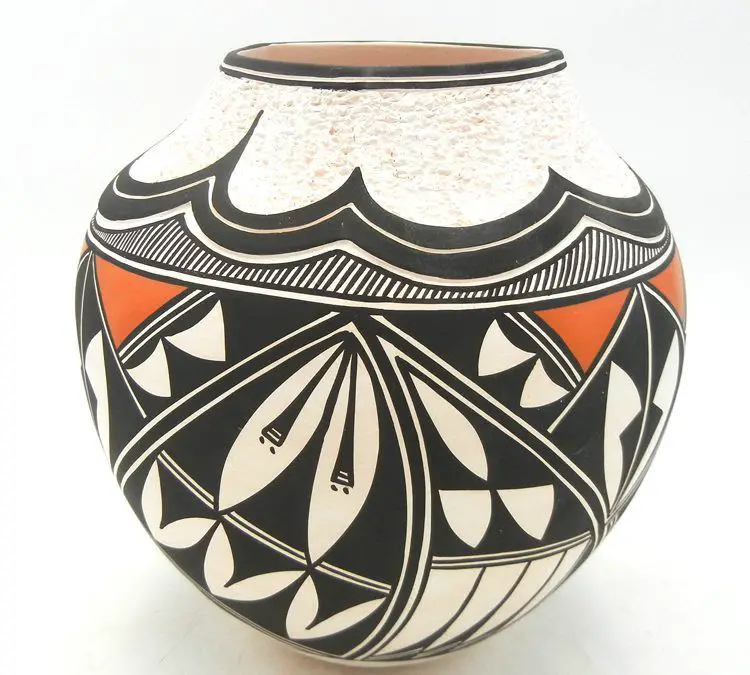Who Owns Pottery Barn?
Pottery Barn is an upscale home furnishings retailer founded in Manhattan in 1949 by Paul Secon and his brother Morris. The first store on 19th Street was only 12 feet wide but full of an eclectic mix of pottery and accessories. Over the next few decades, Pottery Barn expanded across the United States with a focus on practical items for the home at accessible prices.
According to this article, Pottery Barn reached over 30 stores by 1986. However, the company began struggling financially in the late 1980s. In 1986, Gap acquired Pottery Barn but couldn’t turn around the declining performance. In 1988, Gap sold Pottery Barn to William Graham for $12 million.
Williams-Sonoma Acquisition
Pottery Barn was originally founded in 1948 as a small retail store in Manhattan. In 1986, the brand was acquired by Williams-Sonoma, Inc. for an undisclosed amount. At the time, Pottery Barn had 27 stores located in California focused on casual housewares. Williams-Sonoma saw the acquisition as an opportunity to expand its portfolio into the growing furniture and home furnishings market.
The strategic rationale behind the acquisition was to leverage Williams-Sonoma’s retail expertise and scale to grow the Pottery Barn brand nationally. Under Williams-Sonoma’s ownership, Pottery Barn underwent a major expansion of its product lines, store footprint, and brand awareness. Within a few years Pottery Barn grew into a leading national retailer of casual home furnishings and a core brand within the Williams-Sonoma portfolio.
Growth Under Williams-Sonoma
Since being acquired by Williams-Sonoma in 2003, Pottery Barn has experienced significant growth and expansion. Williams-Sonoma brought new resources and operational expertise that enabled Pottery Barn to open new retail locations, enhance its ecommerce capabilities, and develop new product lines.
In terms of retail stores, Pottery Barn expanded from 100 stores at the time of acquisition to over 200 stores across the United States, Canada, Puerto Rico and Australia as of 2022 (Pottery Barn drives Williams-Sonoma to new heights in FY22). The company focused on reaching new suburban markets and designing stores with interactive displays and a hands-on shopping experience.
Pottery Barn also grew its ecommerce business under Williams-Sonoma’s leadership. New technology investments and online merchandising strategies helped drive double-digit annual ecommerce growth for Pottery Barn (Williams-Sonoma, Inc. announces record fiscal year 2022 revenues & earnings). Ecommerce revenues now account for over 50% of total Pottery Barn sales.

In terms of product assortment, Pottery Barn expanded into new categories like outdoor furniture, lighting, rugs and holiday décor. Exclusive designer collaborations were introduced, including partnerships with celebrities like Drew Barrymore. Pottery Barn also launched specialty retail concepts Pottery Barn Kids, Pottery Barn Teen and Pottery Barn Dorm to increase relevance across demographics.
Leadership
Pottery Barn is led by several key executives who oversee the brand’s operations and strategy. The current President of Pottery Barn is Felix Carbullido, who has been in this role since 2018 (Williams-Sonoma Executive Biographies). Jeff Howie serves as the Executive Vice President and Chief Financial Officer of Pottery Barn. Other key executives include David King, who is the Senior Vice President of Pottery Barn Retail, and Laura Alber, who is the CEO and President of the overall Williams-Sonoma brand portfolio (Pottery Barn Executive Team, Comparably).
Many of Pottery Barn’s executives have been with the company for several years and have moved up through various leadership roles. For example, Felix Carbullido joined Williams-Sonoma in 2012 and held various eCommerce leadership positions before becoming President of Pottery Barn (Pottery Barn Management, RocketReach). This demonstrates the stability and longevity of Pottery Barn’s executive team.
Store Locations
As of December 2022, Pottery Barn has 188 stores globally, primarily located in the United States where the company first started and continues to have a strong presence (Source: Williams-Sonoma stores by brand globally 2022). The United States remains Pottery Barn’s key market, with 183 stores as of December 2023. California has the most Pottery Barn stores of any state, followed by Texas and Illinois (Source: Number of Pottery Barn locations in the USA in 2023). Outside of the US, Pottery Barn has stores in Canada, Mexico, and Australia.
Manufacturing and Sourcing
Pottery Barn manufactures its products in multiple locations around the world, including in the United States, Europe and Asia.
Furniture items are made in the US, Asia, and India. From the wide range of offerings from the brand, only one main category is made stateside, according to the All American. The company has manufacturing bases in North Carolina among other US states (https://allamerican.org/investigation/pottery-barn/). Upholstered furniture is primarily made in the US and craftsmanship is a core part of the brand’s image.
However, a variety of Pottery Barn products are imported from overseas locations. According to Storables, Pottery Barn sources furnishings from vendors in Vietnam, Malaysia, Mexico and multiple places in China. The specific manufacturing origin depends on each individual product (https://storables.com/articles/where-is-pottery-barn-furniture-made/).
Pottery Barn states that it is committed to ethical and responsible sourcing. The company audits its vendors and supply chains to ensure there are no human rights abuses or unfair labor practices. Pottery Barn aims to partner with vendors that align with its standards on worker treatment, pay and workplace conditions.
Product Lines
Pottery Barn offers a wide variety of home furnishings and decor products across several key categories. Some of their most popular product lines include:
Bedding – Pottery Barn has an extensive selection of bedding ranging from sheet sets and duvet covers to ornate quilts and shams. Some of their best selling bedding collections include the Snuggle Flannel bedding and the Lumbar Pillow and Quilt set (https://www.potterybarn.com/shop/new/bestsellers-all/).
Furniture – This includes living room furniture like sofas, sectionals, chairs and ottomans. Dining room furniture and bedroom furniture like beds, dressers and nightstands are also top sellers. The Monroe leather sofa and Beckett rectangular dining table are two of their most sought after furniture pieces (https://www.apartmenttherapy.com/pottery-barn-editor-favorites-37231891).
Rugs – Pottery Barn has a vast selection of rugs in different materials, sizes, shapes and colors to fit any space. Some customer favorites include the Amal Trellis rug and Campbell diamond area rug.
Decor – This encompasses mirrors, art, candles, pillows, curtains, lighting and more for styling the home. The Mercury Glass orb hurricane and Geo ceramic vase are popular decorative accents.
Outdoor – For porches, patios and backyards, Pottery Barn sells outdoor furniture, cushions, rugs, lighting, planters and decorative accents. The Montecito furniture collection and Sunbrella performance outdoor fabrics are customer top picks.
Financial Performance
Pottery Barn has seen strong financial performance in recent years as part of the larger Williams-Sonoma portfolio of brands. According to Furniture Today, Pottery Barn led the way for Williams-Sonoma in fiscal year 2022, with $3.556 billion in net revenues for the year, up 14.9% from $3.121 billion in fiscal year 2021.
As reported by Statista, Pottery Barn’s global net revenue was over $3.5 billion in 2022, up from $3.1 billion in 2021. This illustrates the brand’s consistent growth and increasing revenues annually.
According to eCommerceDB, the online revenue of PotteryBarn.com amounted to $2.258 billion in 2022, showing the brand’s strength in ecommerce alongside its physical retail presence.
Overall, Pottery Barn has seen strong profitability and revenue growth in recent years. The brand continues to be a high performer for parent company Williams-Sonoma, with increasing sales and a strong omnichannel retail strategy.
Competitive Landscape
Pottery Barn faces competition from several retailers offering similar home furnishings and decor. Some of its main competitors include:
Crate & Barrel – Founded in 1962, Crate & Barrel offers modern, contemporary furniture and home decor at a range of price points. It has over 100 locations in the US and Canada. Crate & Barrel tends to have a more modern aesthetic compared to Pottery Barn’s traditional style.
Williams Sonoma – Williams Sonoma is also owned by Williams-Sonoma Inc. and offers high-end kitchenware along with some home furnishings. Williams Sonoma tends to be more upscale and expensive than Pottery Barn.
West Elm – Owned by Williams Sonoma Inc., West Elm targets millennials with its mid-century modern furniture and decor. West Elm is priced lower than Pottery Barn.
Restoration Hardware – Founded in 1979, Restoration Hardware offers luxury home furnishings. It competes directly with Pottery Barn’s higher end lines. Restoration Hardware has a more masculine and vintage style compared to Pottery Barn.
Within the home furnishings market, Pottery Barn competes on quality, style and brand image. It positions itself as reliable, traditional home decor. While pricier than discount retailers like IKEA, Pottery Barn offers better quality at mid-tier pricing. Compared to high-end brands, Pottery Barn provides great value for the quality. Overall, Pottery Barn strives to appeal to the mass affluent suburban consumer looking for timeless, classic decor.
Future Outlook
Despite some recent challenges, Pottery Barn is expected to have opportunities for growth in the coming years. According to Williams-Sonoma’s Q2 2023 earnings report, the company expects continued macroeconomic pressure and declining consumer demand for the remainder of 2023, with projected revenue declines of 5-10% (https://ir.williams-sonomainc.com/investor-information/news-releases/news-release-details/2023/Williams-Sonoma-Inc.-announces-second-quarter-2023-results/default.aspx). However, Pottery Barn aims to drive growth through digital initiatives, international expansion, and collaborations, like the recent Harry Potter collection with Warner Bros (https://www.nasdaq.com/articles/williams-sonomas-wsm-pottery-barn-collaborates-with-wbdgcp). The brand also has opportunities in its nursery and teen furnishings lines.
Challenges for Pottery Barn include lower demand for home furnishings as mortgage rates rise and consumers pull back on discretionary purchases. Supply chain disruptions and inflation also put pressure on the business. However, the brand maintains a strong position in the home furnishings industry and has weathered downturns before. With its focus on innovation and sustainability, Pottery Barn is poised for a rebound when economic conditions improve.



